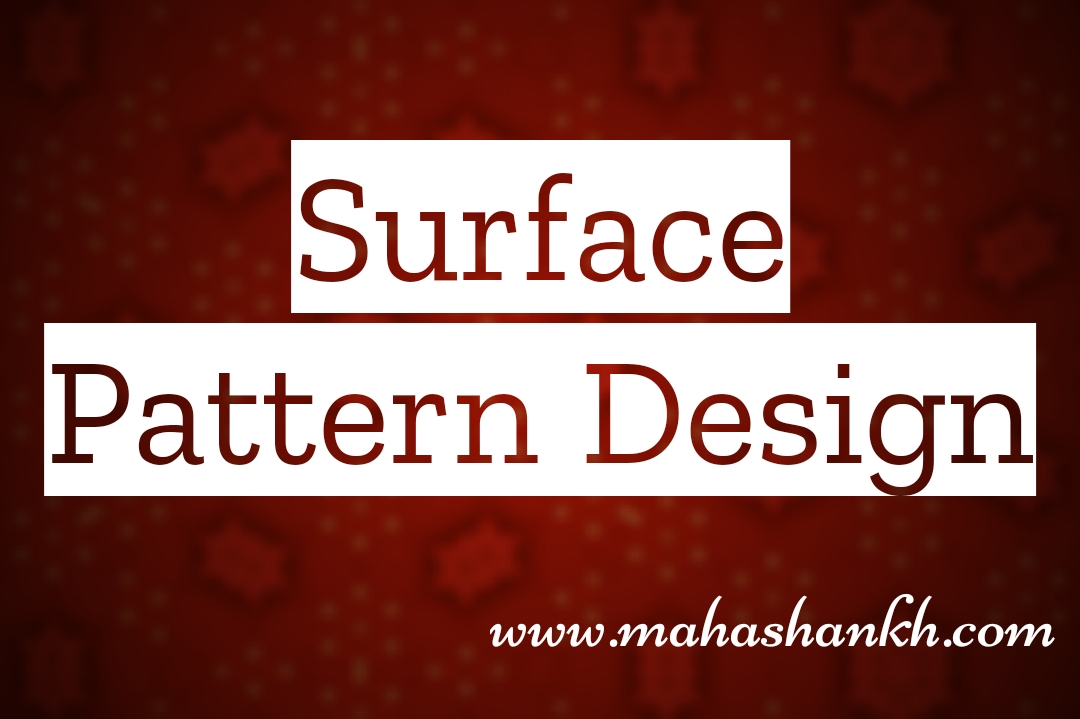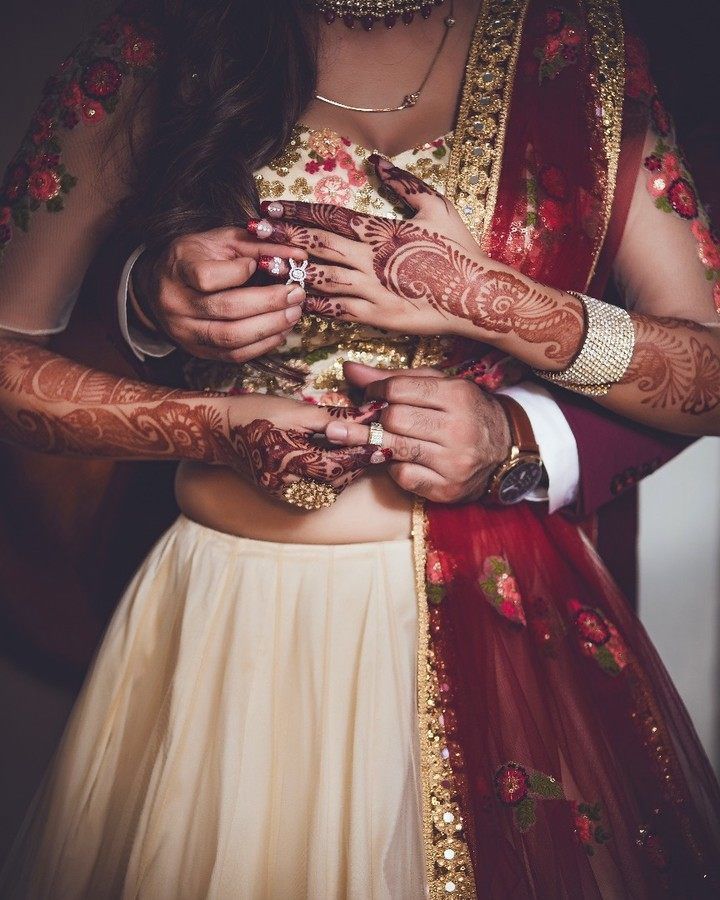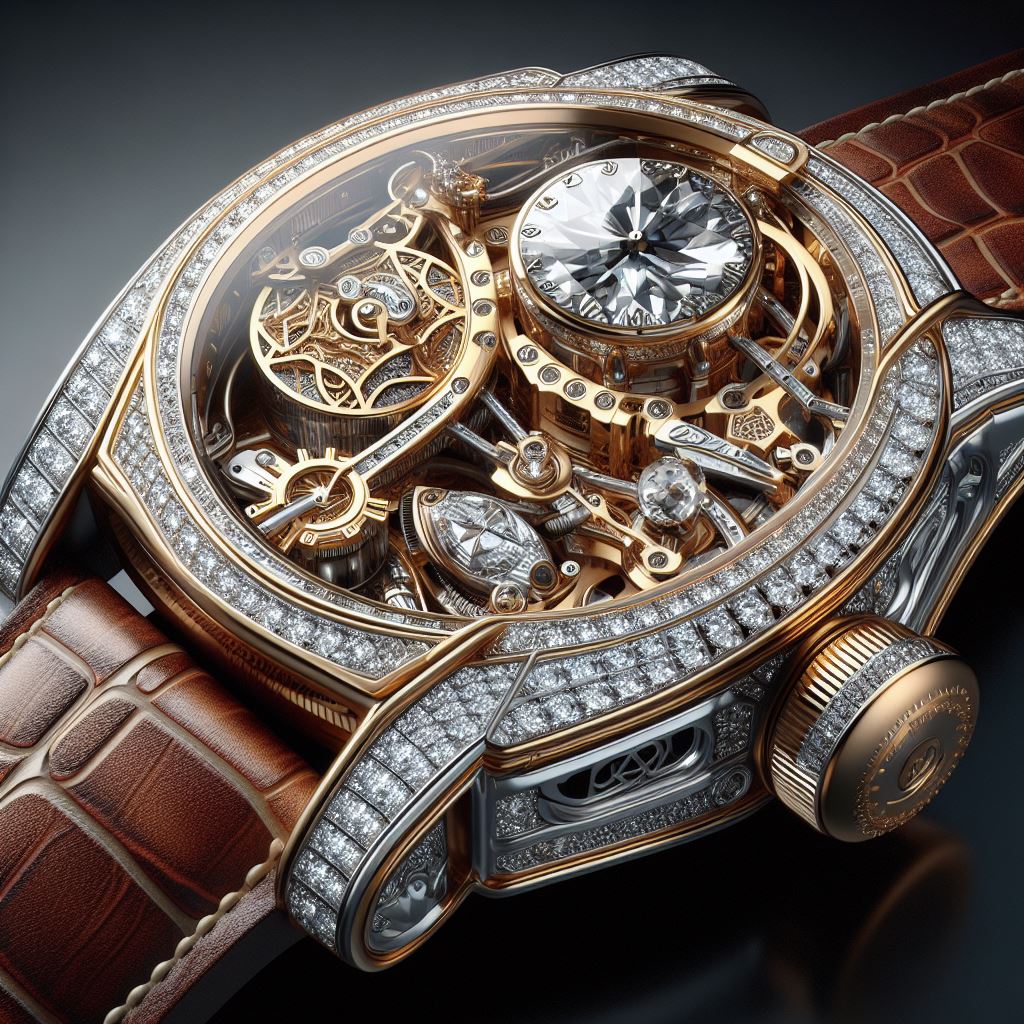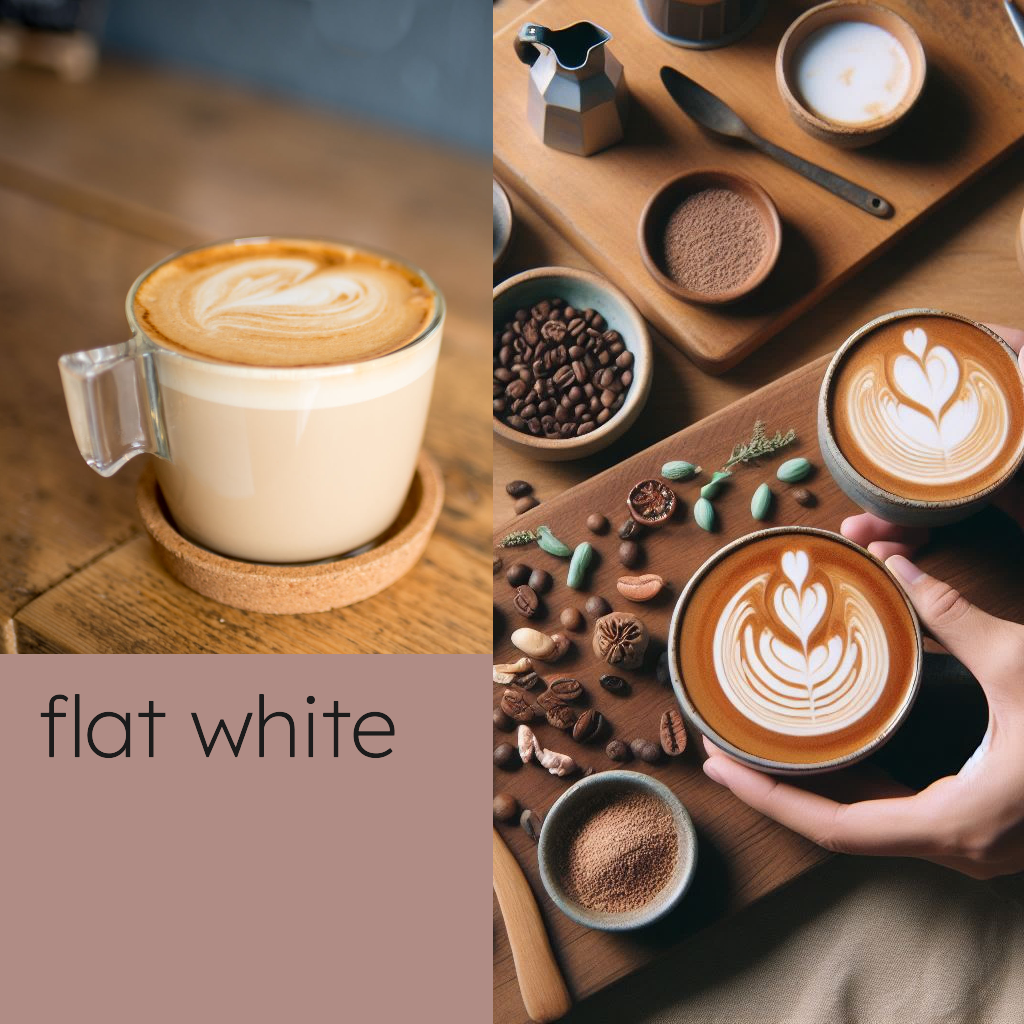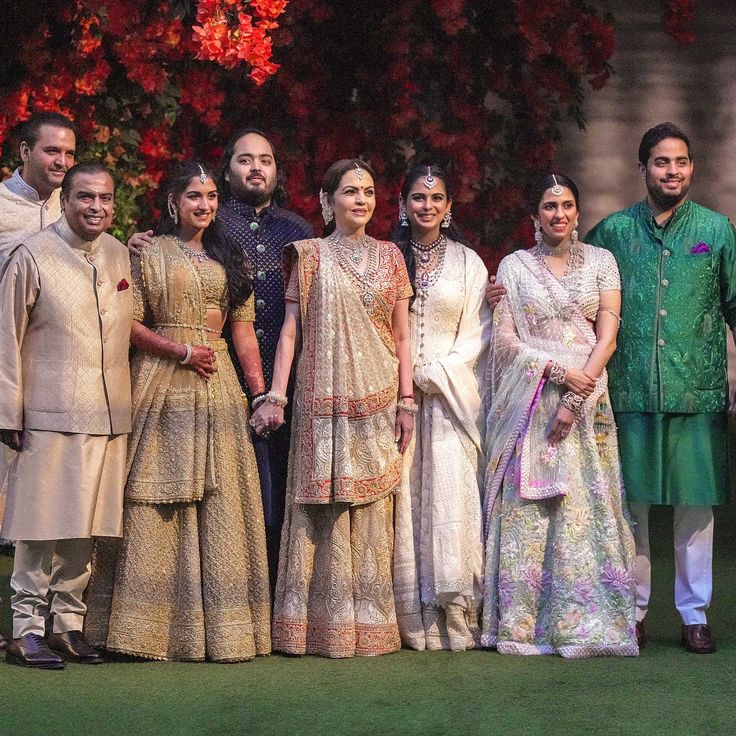Exploring the Artistry of Surface Pattern Design: Infusing Life into Spaces
Surface pattern design is a captivating realm where art, functionality, and aesthetics converge to breathe life into various objects, spaces, and textiles. It’s an art form that encompasses a myriad of motifs, colors, and textures, transforming ordinary surfaces into dynamic and visually stimulating canvases. From fabrics to wallpapers, ceramics to digital interfaces, surface pattern design plays a pivotal role in defining the ambiance and character of our surroundings. In this article, we delve into the enchanting world of surface pattern design, exploring its significance, evolution, and the creative processes that fuel its innovation.
Table of Contents
The Significance of Surface Pattern Design:
At its core, surface pattern design serves both utilitarian and artistic purposes. On a practical level, it enhances the functionality and usability of everyday objects. Whether it’s a cushion adorned with vibrant florals or a sleek smartphone case featuring geometric motifs, surface patterns add personality and charm to products, making them more appealing to consumers.
Moreover, surface pattern design holds immense aesthetic value. It has the power to evoke emotions, convey narratives, and evoke memories. A well-designed pattern can transform a bland space into a vibrant oasis, injecting energy and vitality into its surroundings. Whether it’s the calming effect of nature-inspired prints or the nostalgic charm of retro motifs, surface patterns have the ability to resonate with individuals on a deeply personal level, creating connections and fostering a sense of belonging.
Evolution of Surface Pattern Design:
Surface pattern design has evolved significantly over the years, reflecting shifts in cultural, technological, and artistic trends. Historically, patterns were often handcrafted, with artisans meticulously creating intricate designs using techniques like block printing, weaving, and embroidery. These traditional methods imbued patterns with a sense of craftsmanship and authenticity, celebrating cultural heritage and craftsmanship.
In the modern era, advancements in technology have revolutionized the landscape of surface pattern design. Digital tools and software enable designers to explore endless possibilities, from intricate digital illustrations to photorealistic textures. This digital revolution has democratized the design process, allowing artists from diverse backgrounds to create and share their work with global audiences. Additionally, sustainability and ethical considerations have become integral to contemporary design practices, with many designers opting for eco-friendly materials and production methods.
Creative Process and Inspiration:
The creative process of surface pattern design is as diverse as the patterns themselves. It often begins with inspiration drawn from various sources, including nature, art, architecture, and cultural traditions. Designers immerse themselves in research, gathering imagery, textures, and color palettes that resonate with the theme or concept they aim to convey.
Once inspired, designers translate their ideas onto digital or physical canvases, experimenting with different compositions, scales, and colorways. Sketching, painting, and digital rendering are common techniques used to develop initial concepts, allowing designers to refine their designs iteratively. Collaboration also plays a significant role in the creative process, with designers often collaborating with manufacturers, clients, and fellow creatives to bring their visions to life.
Surface pattern design is a vibrant and dynamic discipline that enriches our everyday lives in countless ways. From the clothes we wear to the spaces we inhabit, patterns infuse our surroundings with beauty, personality, and meaning. As technology continues to advance and cultural trends evolve, the possibilities for surface pattern design are boundless. Whether paying homage to tradition or pushing the boundaries of innovation, surface pattern designers continue to captivate and inspire us with their creativity and ingenuity, reminding us of the transformative power of art and design.
What is Surface Pattern Design?

Surface pattern design refers to the art and process of creating decorative patterns that are applied to various surfaces, such as textiles, wallpapers, ceramics, packaging, digital interfaces, and more. These patterns can range from simple geometric shapes to intricate motifs inspired by nature, culture, or abstract concepts.
Surface pattern design involves a combination of artistic skills, creativity, and technical knowledge. Designers often start by sketching or digitally creating patterns, experimenting with different motifs, colors, and compositions. These patterns are then applied or printed onto surfaces using various techniques such as screen printing, digital printing, block printing, weaving, or embroidery.
What is the job role of a surface pattern designer?
The job role of a surface pattern designer involves creating original and visually appealing patterns that are applied to various surfaces, products, or materials. Surface pattern designers work across a wide range of industries, including fashion, textiles, home decor, stationery, packaging, and digital media. Here are some key responsibilities and tasks associated with the role:
- Concept Development: Surface pattern designers begin by researching and gathering inspiration from diverse sources such as nature, art, culture, and current trends. They develop concepts and themes for their patterns based on client briefs, market demands, or personal creativity.
- Design Creation: Using traditional or digital tools, surface pattern designers create original designs and motifs. They experiment with colors, textures, shapes, and compositions to develop visually engaging patterns that meet the requirements of the project.
- Pattern Production: Surface pattern designers are proficient in various techniques for producing patterns, including hand drawing, painting, digital illustration, and computer-aided design (CAD) software. They may create repeat patterns, placement prints, or seamless designs depending on the application and client preferences.
- Collaboration: Surface pattern designers often collaborate with other professionals such as product developers, manufacturers, buyers, and marketers. They communicate with clients or stakeholders to understand their needs and preferences, incorporating feedback and making revisions as necessary.
- Trend Forecasting: Keeping abreast of current fashion, design, and cultural trends is essential for surface pattern designers. They analyze market trends, attend trade shows, and conduct trend research to ensure that their designs remain relevant and appealing to target audiences.
- Technical Specifications: Surface pattern designers must understand the technical requirements of different production methods and materials. They create design files with accurate colorways, dimensions, and specifications for printing, weaving, or manufacturing processes.
- Portfolio Development: Building a strong portfolio is crucial for surface pattern designers to showcase their skills, creativity, and versatility. They curate a collection of their best work to attract clients, secure freelance opportunities, or apply for jobs in the industry.
- Intellectual Property Management: Surface pattern designers need to understand copyright laws and intellectual property rights related to their designs. They may work with legal advisors or licensing agencies to protect their original creations and negotiate licensing agreements with clients or manufacturers.
What is the salary of surface pattern designer in India?
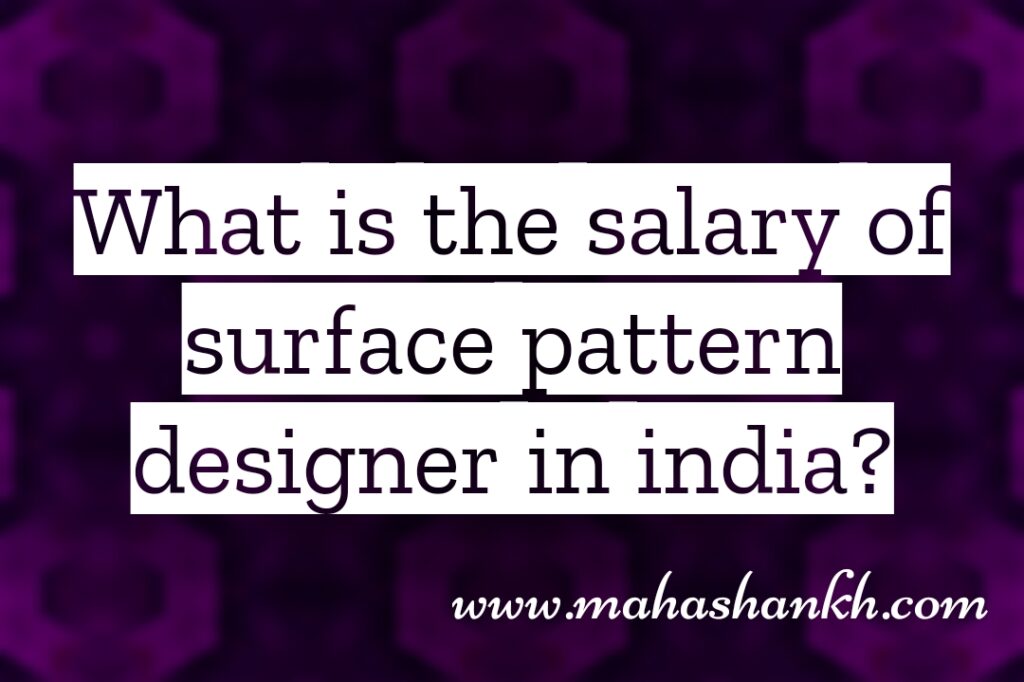
The salary of a surface pattern designer in India can vary depending on several factors, including:
Experience: Freshers can expect a lower starting salary, while experienced designers can command significantly higher pay. Location: Major cities like Mumbai, Delhi, and Bangalore typically offer higher salaries compared to smaller towns. Industry: The industry you work in can also impact your salary. For example, designers working in the fashion industry might earn more than those working in home decor. Company size and reputation: Established companies and design studios tend to offer higher salaries than smaller or lesser-known ones. Skills and expertise: Designers with specialized skills or expertise in specific software or techniques can earn more.
Here’s a summary of the average salary range for surface pattern designers in India based on available data:
- Average annual salary: ₹16.5 lakhs – ₹21.1 lakhs (approximately $20,000 – $26,000 USD)exclamation
- Range: ₹14.0 lakhs – ₹39.1 lakhs (approximately $17,000 – $48,000 USD)
- Hourly rate: Information on hourly rates in India is limited, but you can use conversion rates to estimate based on US hourly rates, which range from $9.62 to $50.96.
Here are some resources where you can find more information about surface pattern designer salaries in India:
- 6figr.com: https://6figr.com/in/salary/indian
- Collegedunia: https://www.ambitionbox.com/salaries/collegedunia-salaries
- ZipRecruiter: https://www.glassdoor.com/Salaries/surface-pattern-designer-salary-SRCH_KO0,24.htm (Note: This is for the US, but it can give you a general idea)
How much money do surface pattern designers make?
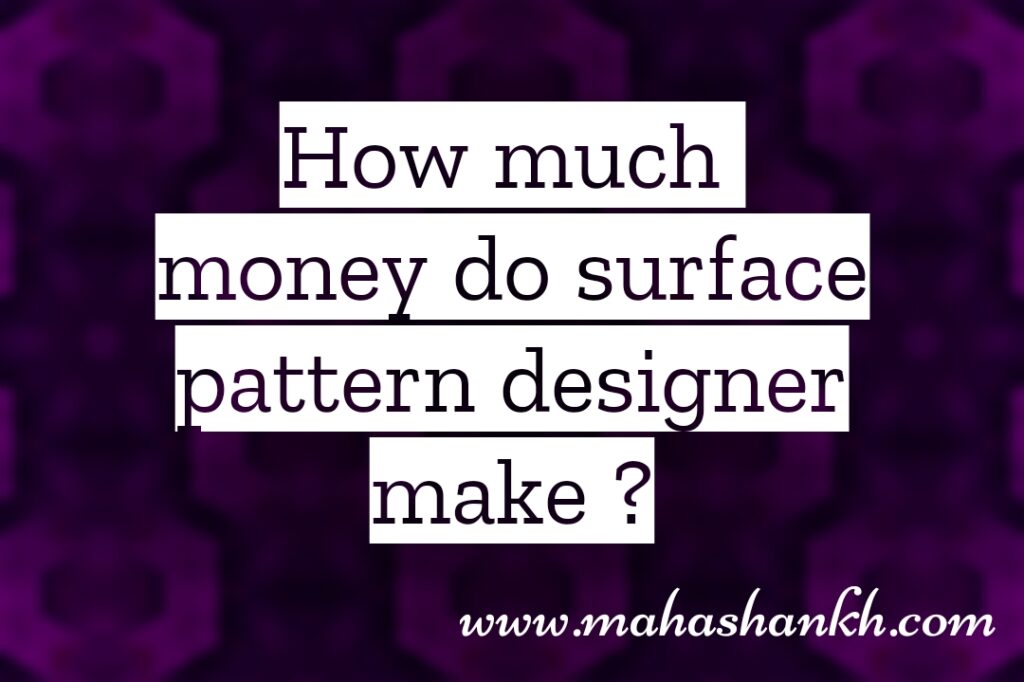
Determining the exact income of a surface pattern designer depends heavily on several factors, making it difficult to give a single definitive answer. Here’s a breakdown of what influences their earnings:
Location:
- Region: Salaries vary significantly across regions. For example, a designer in San Francisco, USA, could earn considerably more than someone in Kolkata, India.
- Cost of living: Locations with higher living expenses often offer higher potential salaries to maintain a similar standard of living.
Experience:
- Freshers typically earn less, while experienced designers with established portfolios command higher fees. Years of experience directly translate to expertise and desirability for clients.
Employment type:
- Freelance: This offers flexibility and the potential for high earnings, but income can be inconsistent and requires self-marketing and business management skills.
- In-house: Studios or companies offer steady income and benefits, but salaries might be capped depending on the organization’s size and structure.
- Licensing: Royalties from successful pattern placements can be lucrative, but success depends on market trends and individual designs.
Industry:
- High-end fashion: Typically pays more than industries like home decor or stationery due to higher product margins and brand recognition.
- Niche markets: Catering to specific audiences with higher disposable income can create opportunities for premium pricing.
Skillset and specialization:
- Technical proficiency: Mastering design software and specific techniques like color theory or trend forecasting can increase value.
- Unique style and niche: Standing out with a distinct aesthetic and targeted portfolio attracts clients seeking specific styles.
Sales and marketing:
- Negotiation skills: Effectively communicating the value of your work and negotiating fair rates are crucial for freelancers.
- Marketing efforts: Building a strong online presence, networking, and participating in relevant platforms can generate leads and sales.
Here’s a rough estimate based on available data (remember, these are averages and individual cases can vary greatly):
- Hourly rate: US: $9.62 – $50.96, India: ₹1,500 – ₹5,000 (estimated based on hourly conversion rates)
- Annual salary: US: $41,500 – $75,000, India: ₹16.5 lakhs – ₹21.1 lakhs
Ultimately, the income of a surface pattern designer depends on their individual efforts, strategic choices, and market forces. Continuous learning, honing skills, building a strong network, and effectively marketing oneself are key factors for success and higher earnings.
AVERAGE PRICE OF SURFACE PATTERN DESIGN IN 2024
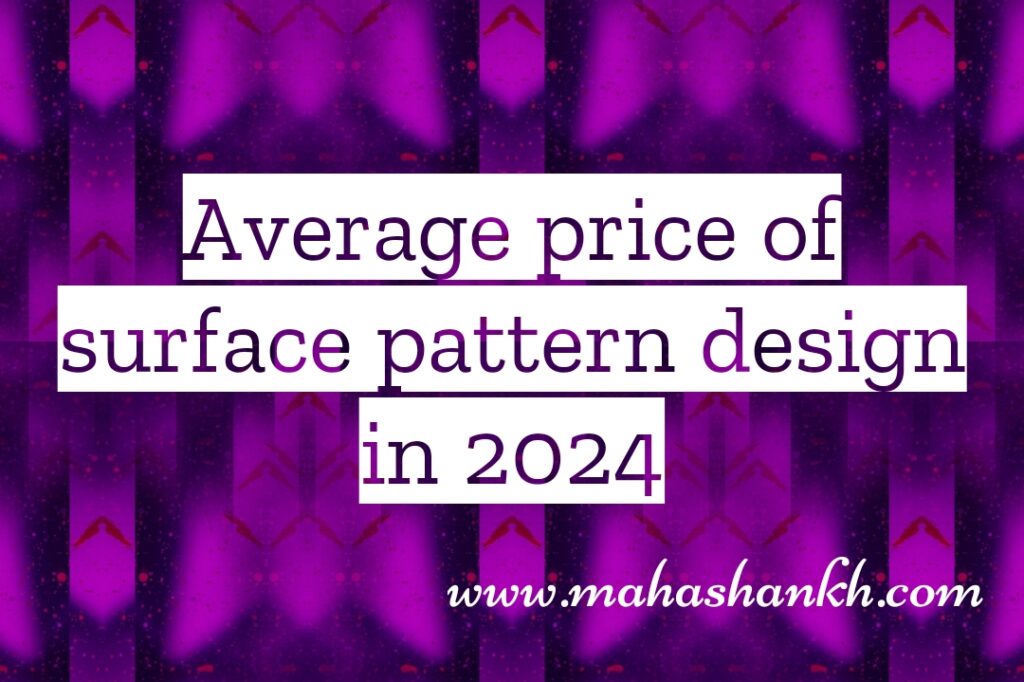
Complexity and detail: More intricate and detailed designs naturally require more time and effort, leading to higher prices.
Commercial usage: Patterns intended for high-volume production like mass-produced fabrics will generally cost less per unit compared to those for exclusive, limited-edition products.
Designer experience and reputation: Established designers with proven track records can command higher fees compared to newcomers.
Licensing vs. commission: Licensing fees (royalties per product sold) can differ significantly from upfront commissions paid for specific projects.
Market and industry: High-end fashion or luxury brands typically pay more than budget-friendly home decor or stationery markets.
Project scope and deliverables: The extent of work involved, including revisions, customization, and exclusivity rights, influences the price.
Instead of seeking a single average, consider these resources for a better understanding of pricing:
- Freelance marketplaces: Platforms like Upwork, Fiverr, and Creative Market show actual prices charged by various designers for specific projects.
- Design agency rates: Many agencies publish base rates for different design services, offering insights into industry standards.
- Pricing guides and articles: Industry publications and design blogs often offer advice and resources on calculating surface pattern design fees.
What is the maximum salary of design engineer in India?

Reported Data:
- 6figr.com: Shows the highest reported salary for a design engineer as ₹42.0 lakhs and ₹40.0 lakhs for mechanical design engineers specifically.
- Talent.com: Mentions the maximum reaching ₹2,000,000 per year.
- Payscale: Reports the highest 10th percentile earning ₹8.1 lakhs per month, translating to around ₹97.2 lakhs annually.
Factors Influencing High Salaries:
- Extensive Experience: Years of experience with proven success stories and impactful contributions significantly elevate earning potential.
- Specialized Skills: Mastery of niche skills like advanced software, complex design methodologies, or specific industry expertise can be highly sought-after and command premium rates.
- Leadership Roles: Leading design teams, managing large projects, or holding executive positions attract significantly higher salaries.
- Top Companies: Multinational corporations, tech giants, and leading design firms often offer competitive salaries and bonus structures to attract top talent.
- Location: Major cities like Bangalore, Mumbai, and Delhi tend to have higher salary caps compared to smaller towns.
Important Caveats:
- Reported data might not capture outliers or highly specialized positions.
- Reaching the absolute maximum often requires a combination of exceptional skills, experience, and specific opportunities aligned with individual strengths.
- The “maximum” itself can constantly change as market demands and industry trends evolve.
Additional Resources:
- You can explore salary data on platforms like Naukri.com, Glassdoor, and LinkedIn to get a broader sense of current design engineer salaries in India.
- Remember, individual salary negotiations, benefits packages, and stock options can further vary, impacting your overall compensation.
FUTURE OF SURFACE PATTERN DESIGN IN 2024
The future of surface pattern design in 2024 is expected to be a vibrant and exciting space, marked by several key trends:
Sustainability and eco-consciousness: Using recycled materials, natural dyes, and eco-friendly production methods will be increasingly important. Expect patterns inspired by nature, incorporating organic shapes, textures, and colors.
Technology and innovation: Digital tools like AI and generative design will continue to influence patterns, leading to novel creations and pushing creative boundaries. 3D printing for textiles and surfaces will offer new possibilities for customization and texture exploration.
Personalization and niche markets: Customization and catering to specific demographics will be key. We’ll see more patterns catering to cultural nuances, individual preferences, and niche communities.
Nostalgia and retro influences: Vintage styles and patterns from the past, particularly the 70s and 80s, will have a resurgence. Expect playful geometrics, bold florals, and retro color palettes.
Boldness and Maximalism: After periods of minimalism, a shift towards bolder patterns and maximalist aesthetics is anticipated. This includes vibrant color combinations, large-scale motifs, and layering of patterns.
Multisensory experiences: Surface patterns will be designed to engage multiple senses, incorporating textures, materials, and even scents to create richer and more immersive experiences.
Focus on wellness and mindfulness: Patterns reflecting calmness, serenity, and natural elements will continue to be popular, contributing to overall well-being in spaces.
Social impact and storytelling: Designers will increasingly use their work to address social issues and advocate for causes, incorporating symbolism and narratives into their patterns.
Collaboration and community: Expect to see more collaborations between designers, brands, and other disciplines, fostering a sense of community and cross-pollination of ideas.
Global influences: As the world becomes more interconnected, expect to see a fusion of global styles and influences in surface patterns, reflecting cultural diversity and shared experiences.
MARKET OF DIGITAL SURFACE PATTERN DESIGN
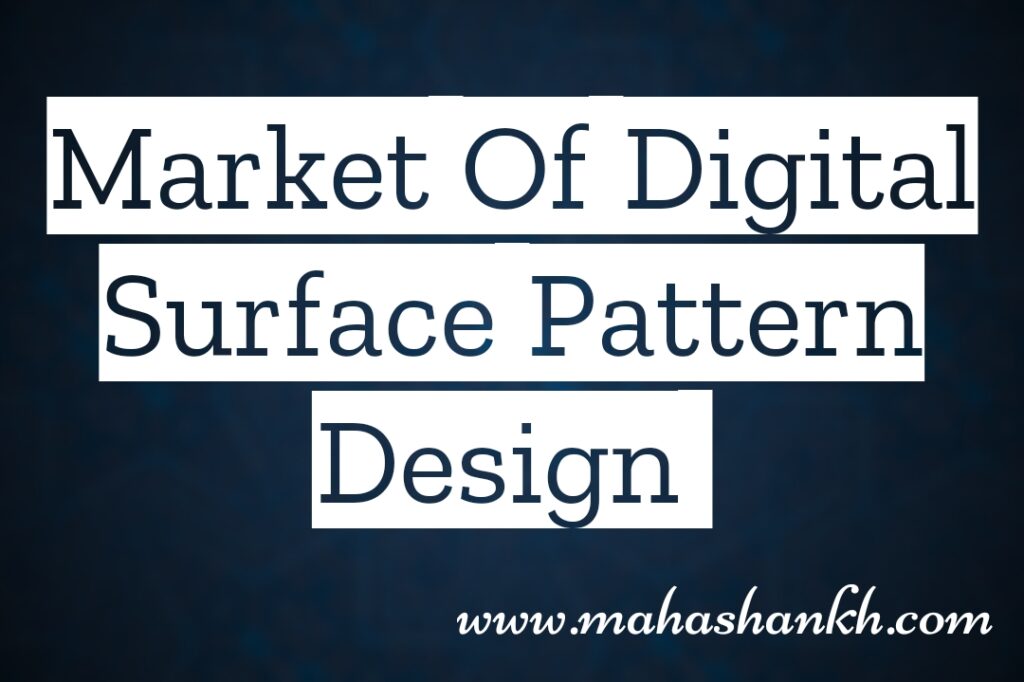
The market for digital surface pattern design is booming, driven by the increasing demand for unique and affordable designs for a variety of products such as fabrics, home decor, stationery, and more. Here’s a breakdown of the key aspects of this market:
Growth and Potential:
- The global digital surface pattern design market is expected to reach a value of USD 3.71 billion by 2027, growing at a CAGR of 12.1% from 2022 to 2027.
- This growth is fueled by the increasing popularity of online marketplaces, the growing awareness of intellectual property rights, and the rising demand for personalized and customized products.
Key Players:
- The market is dominated by a large number of independent designers who sell their patterns through online marketplaces like Creative Market, Etsy, and Spoonflower.
- There are also a growing number of design agencies that specialize in creating surface patterns for clients in various industries.
- Additionally, some large companies have their own in-house design teams that create surface patterns for their products.
Distribution Channels:
- Online marketplaces: These platforms provide a convenient way for designers to sell their patterns to a global audience.
- Direct sales: Many designers also sell their patterns directly through their own websites or online stores.
- Licensing: Designers can license their patterns to manufacturers or other businesses for a royalty fee.
Trends and Opportunities:
- Sustainability: There is a growing demand for eco-friendly and sustainable surface patterns.
- Personalization: Customers are increasingly looking for products that are unique and reflect their individual style.
- Technology: New technologies like artificial intelligence and 3D printing are opening up new possibilities for surface pattern design.
- Global influences: The market is becoming increasingly globalized, with designers incorporating influences from different cultures into their work.
Challenges:
- Competition: The market is becoming increasingly competitive, making it difficult for new designers to stand out.
- Pricing: It can be challenging to price patterns competitively, especially when competing with mass-produced designs.
- Copyright infringement: Designers need to be aware of copyright infringement and take steps to protect their work.
USES OF DIGITAL SURFACE PATTERN DESIGN
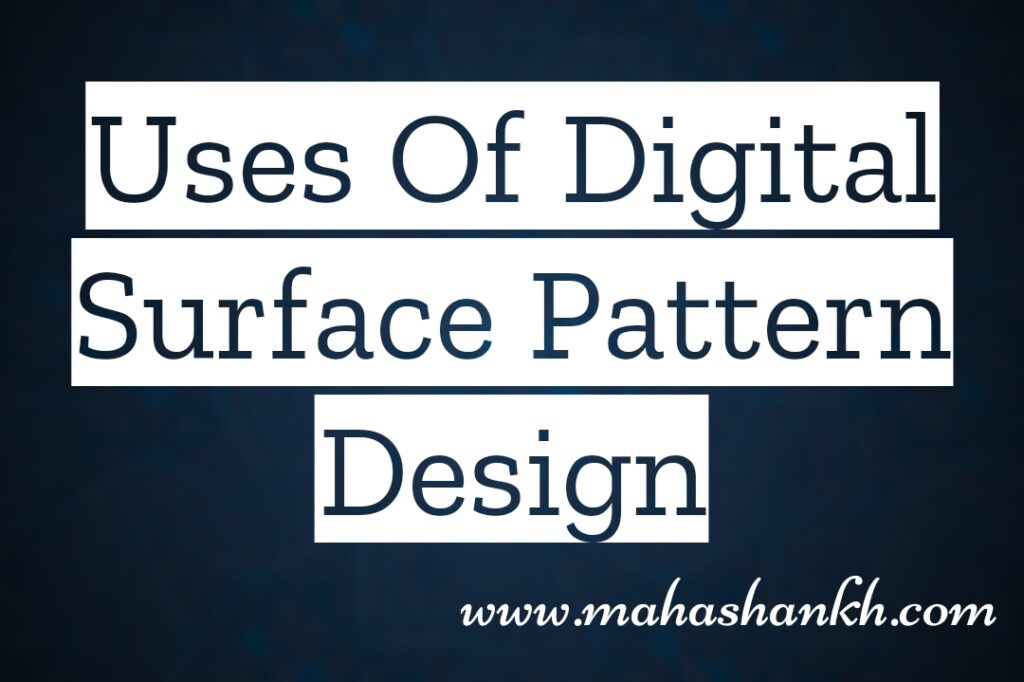
The uses of digital surface pattern design are vast and ever-expanding, with applications across diverse industries and products. Here are some key areas where it thrives:
Textiles:
- Fashion: Dresses, shirts, pants, accessories like scarves and bags, activewear, sleepwear, and more.
- Home Decor: Curtains, tablecloths, cushions, throws, bedsheets, towels, and wallpaper.
- Upholstery: Furniture, sofas, chairs, and ottomans.
- Technical Textiles: Sportswear, medical fabrics, and industrial applications.
Stationery and Packaging:
- Greeting cards, notebooks, wrapping paper, gift boxes, product packaging, and labels.
Digital Products:
- Wallpapers, app interfaces, website backgrounds, and online advertisements.
3D Printing and Product Design:
- Phone cases, mugs, home decor objects, and custom-printed products.
Other Creative Applications:
Beyond these specific uses, digital surface pattern design finds its way into:
- Branding and Marketing: Creating brand identities and visual campaigns with unique patterns.
- Personalization: Enabling individuals to customize products with their own chosen patterns.
- Storytelling and Communication: Using patterns to convey messages, emotions, and cultural narratives.
- Art and Expression: Offering endless possibilities for artistic exploration and self-expression.
The beauty of digital surface pattern design lies in its versatility and adaptability. It can be used for mass production or artisanal crafts, cater to specific markets or individual preferences, and contribute to various creative and commercial endeavors. As technology continues to evolve and design trends shift, the potential applications of digital surface pattern design are sure to keep expanding and surprising us.
TOP 15 DIGITAL SURFACE PATTERN DESIGN MAKER COMPANY SELLING DESIGN ONLINE

1. Spoonflower:
- Mahashankh Design: An Indian surface pattern design studio offering a variety of unique and colorful patterns inspired by Indian culture and textiles.
- Mahashankh offers design in two catogories 1. Dedicated Design – this cotogries of single design , single buyer .
- The company presents an extensive, exclusive library of designs meticulously crafted by Mahashankh Design’s expert designers. It is important to note that Mahashankh exclusively offers designs created in-house and does not engage in the sale or representation of user-generated or curated designs from independent artists. Every design showcased on the official company website, www.mahashankh.com, is the result of the skill and expertise of Mahashankh’s proficient designers.
- Convertible Design allows for the transformation of a singular design into multiple variations through adjustments in parameters such as brightness, contrast, exposure, saturation, sharpness, and the unveiling of concealed patterns.
- The majority of the designs adhere to square dimensions.
- Allows printing on a variety of fabrics and home decor products.
- Features a vibrant community of designers and makers.
2. Creative Market:
- Showcases a diverse range of design assets, including surface patterns, from both individual sellers and design studios.
- Offers flexible licensing options for both personal and commercial use.
- Has a user-friendly search and browsing interface.
3. Society6:
- Focuses on selling finished products featuring artists’ designs, but also allows pattern downloads.
- Offers a wide variety of products, including home decor, apparel, tech accessories, and more.
- Provides good exposure for artists through its established marketplace.
4. Redbubble:
- Similar to Society6, allows artists to sell finished products and patterns.
- Features a large and active community of independent creators.
- Offers a wide range of products and printing options.
5. DesignBundles:
- Sells design bundles at discounted prices, including many that feature surface patterns.
- Offers a mix of curated and individual artist collections.
- Provides good value for buyers looking for multiple design assets.
6. The Hungry JPEG:
- Specializes in high-quality digital products for creative professionals, including surface patterns.
- Offers curated collections and individual designer portfolios.
- Features frequent sales and discounts.
7. Pattern Library:
- Offers a curated selection of high-quality surface patterns from established designers.
- Provides extended commercial licenses for wider usage.
- Focuses on modern and trendy designs.
8. Freepik:
- Offers a mix of free and premium design resources, including some surface patterns.
- Good option for finding budget-friendly designs.
- Requires careful checking of license terms for free resources.
9. Shutterstock:
- Extensive library of stock photos, illustrations, and vectors, including some surface patterns.
- Offers various subscription plans and individual purchases.
- Good resource for finding diverse design styles.
10. Depositphotos:
- Similar to Shutterstock, offers a broad selection of stock images and design assets, including some surface patterns.
- Provides flexible licensing options and competitive pricing.
- User-friendly search and filtering tools.
11. Adobe Stock:
- Integrated with Adobe Creative Suite, offering seamless access to design assets.
- Includes a curated selection of high-quality surface patterns.
- Requires a subscription to Adobe Creative Cloud.
12. 123RF:
- Offers a large collection of affordable stock photos, illustrations, and vectors, including some surface patterns.
- Provides both individual purchases and subscription plans.
- Good option for finding budget-friendly and diverse design options.
13. PatternBank:
- Curated marketplace specializing in high-resolution, seamless surface patterns.
- Features designs from established and emerging artists.
- Offers extended commercial licenses.
14. The Designest:
- Boutique marketplace showcasing unique and exclusive surface patterns from independent designers.
- Focuses on high-quality and curated collections.
- Offers competitive pricing and flexible licensing options.
15. Designious:
- Up-and-coming marketplace showcasing a variety of surface patterns from talented designers.
- Offers affordable prices and diverse design styles.
- Provides good exposure for emerging artists.


